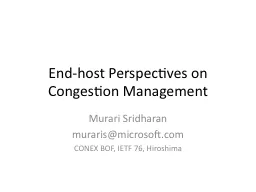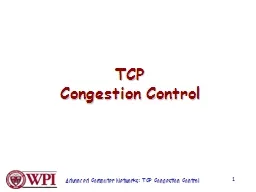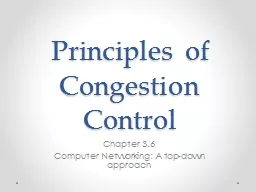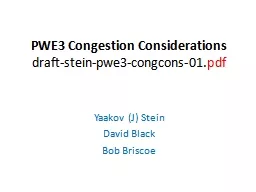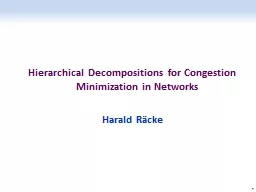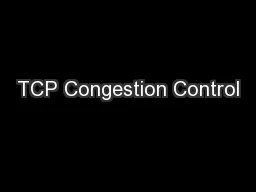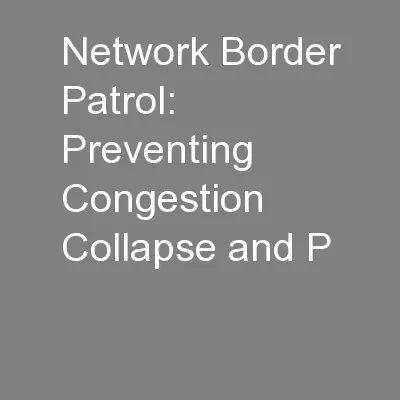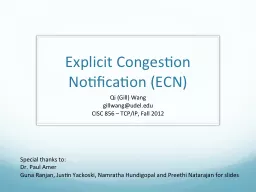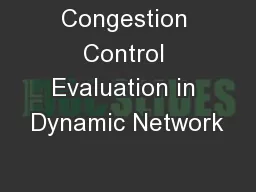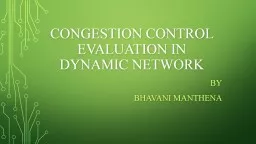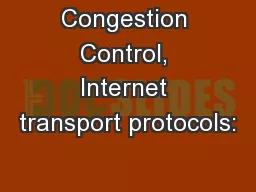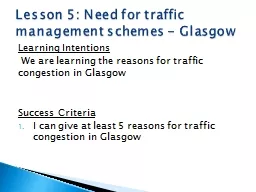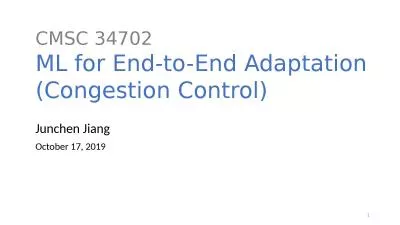PPT-End-host Perspectives on Congestion Management
Author : alexa-scheidler | Published Date : 2017-09-29
Murari Sridharan murarismicrosoftcom CONEX BOF IETF 76 Hiroshima Its all about the apps Apps have diverse needs P2P VoIP TV online apps games Filling the pipe while
Presentation Embed Code
Download Presentation
Download Presentation The PPT/PDF document "End-host Perspectives on Congestion Mana..." is the property of its rightful owner. Permission is granted to download and print the materials on this website for personal, non-commercial use only, and to display it on your personal computer provided you do not modify the materials and that you retain all copyright notices contained in the materials. By downloading content from our website, you accept the terms of this agreement.
End-host Perspectives on Congestion Management: Transcript
Download Rules Of Document
"End-host Perspectives on Congestion Management"The content belongs to its owner. You may download and print it for personal use, without modification, and keep all copyright notices. By downloading, you agree to these terms.
Related Documents

